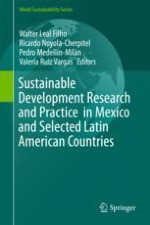This book provides an essential overview of sustainable development research in Mexico. It discusses the empirical research methods and findings, as well as practical initiatives and projects being pursued in Mexico and other countries in the region.
Although a number of Mexican universities are now conducting high-quality research on matters related to sustainable development, there are few publications that offer a multidisciplinary overview of research efforts for a broader audience. This book addresses that gap in the literature, providing researchers at Mexican universities – including those from other countries working in Mexico – with an opportunity to present their work, i.e. curriculum innovations, empirical work, activities, case studies, and practical projects. As such, it fosters the exchange of information, ideas and experiences, successful initiatives and best practices.
